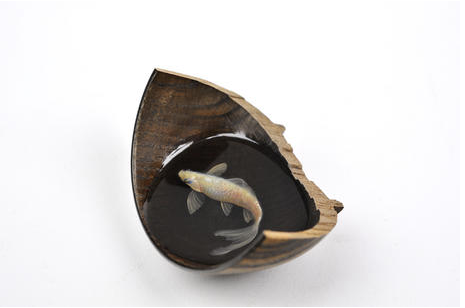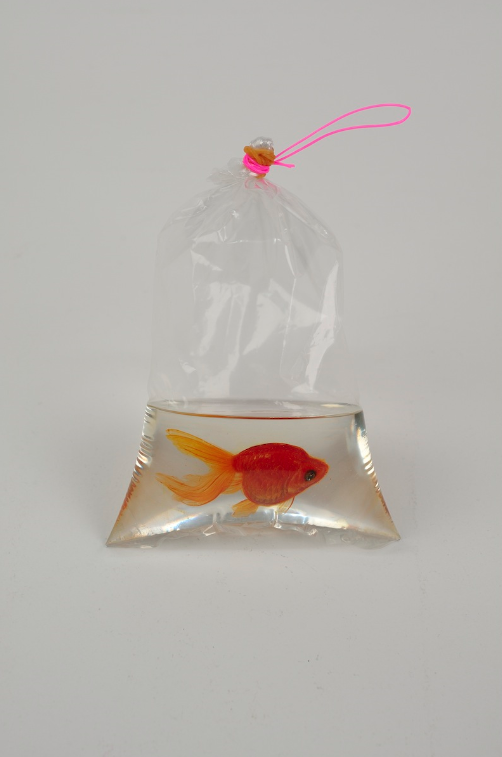Art & Exhibitions
artnet Asks: Goldfish Artist Riusuke Fukahori
He was widely recognized in 2012 for his eerily lifelike depictions of goldfish.

He was widely recognized in 2012 for his eerily lifelike depictions of goldfish.

Lorraine Rubio

Japanese artist Riusuke Fukahori was widely recognized via Internet blogs in 2012 for his three-dimensional resin paintings of goldfish in Japanese household items like bowls and cups. He crafts these hyper-realistic depictions by levels of resin. Although he mainly works in resin, Fukahori doesn’t identify himself as a resin painter, rather as a goldfish painter, finding inspiration in their spirit and calling his turn to them as a subject his “Goldfish Salvation.” His work has been exhibited internationally, including at The Solo Project in Basel and Joshua Liner Gallery in New York. Fukahori currently lives and works in Aichi, Japan.
When did you know you wanted to be an artist?
I have loved drawing ever since I was a child. Back then, my dream was to be a manga (comic book) artist. I graduated art school at 23 years old and got a job at a company, but little by little, I realized that what I really wanted was to be doing art. Then, when I was 26 years old, I decided to quit my job and start down the path of becoming an artist. Looking back now, it was definitely the right decision.

Riusuke Fukahori, The Sun (2013)
Photo courtesy of the artist and Joshua Liner Gallery.
What inspires you?
I am inspired by so much in everyday life. First of all, I am inspired most of all by the goldfish I keep as pets in my studio. Every morning while I feed them and clean their tanks, I look at their colors and shapes, and catalogue their different mannerisms and movements in my mind. Also, if a goldfish dies, I put it on a board and observe it. I analyze it by looking at its scales under a magnifying glass and studying the structure of its wen (bulbous head bump on certain types of goldfish). And then, finally, I draw a sketch in memory of the goldfish. By doing all of this, all of the goldfish who pass away get burned into my memory. In other words, all of the goldfish that I paint are a collection of all the goldfish that I have had that have passed away.
I am also inspired by many things other than goldfish. People, especially, spark much of my creativity. For example, while watching people cross the street in the city, or while playing with my son, I will be hit with inspiration, as if I was struck by lightning. This is because, to me, goldfish and people are very similar beings. The goldfish that I draw are not really goldfish, but representations of people. People are just goldfish living in the fish tank called Earth.

Riusuke Fukahori, Warewan ni Byaku (2013)
Photo courtesy of the artist and Joshua Liner Gallery.
If you could own any work of modern or contemporary art, what would it be?
Monet‘s Water Lilies (1907)

Riusuke Fukahori, The Sea 2 (2013)
Photo: Courtesy the artist and Joshua Liner Gallery.
What are you working on at the moment?
I am creating works using very old vessels, such as excavated Persian pottery or old pieces made by famous potters from the past, to challenge myself to create works with interesting stories.
Also, I am creating two-dimensional artwork. Recently, I have been working on some oil paintings.
When not making art, what do you like to do?
I like Japanese ancient history, so I enjoy reading archaeology books. I like to visit historical sites when I have time. Other than that, I sometimes go to Japanese hot springs or to the beach with my family. I especially enjoy going to the hot springs, and I sit in the warm water and feel like I am a goldfish.